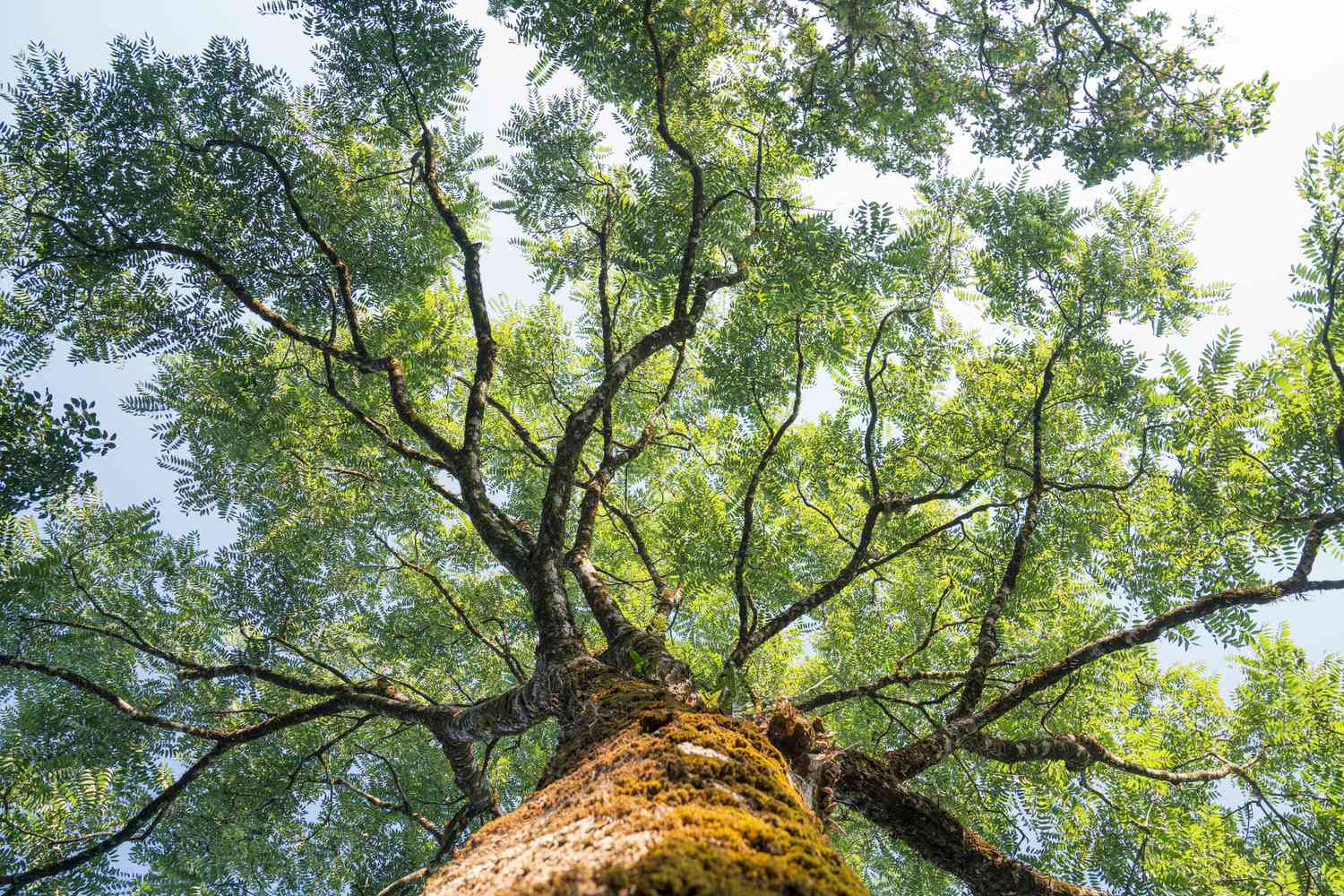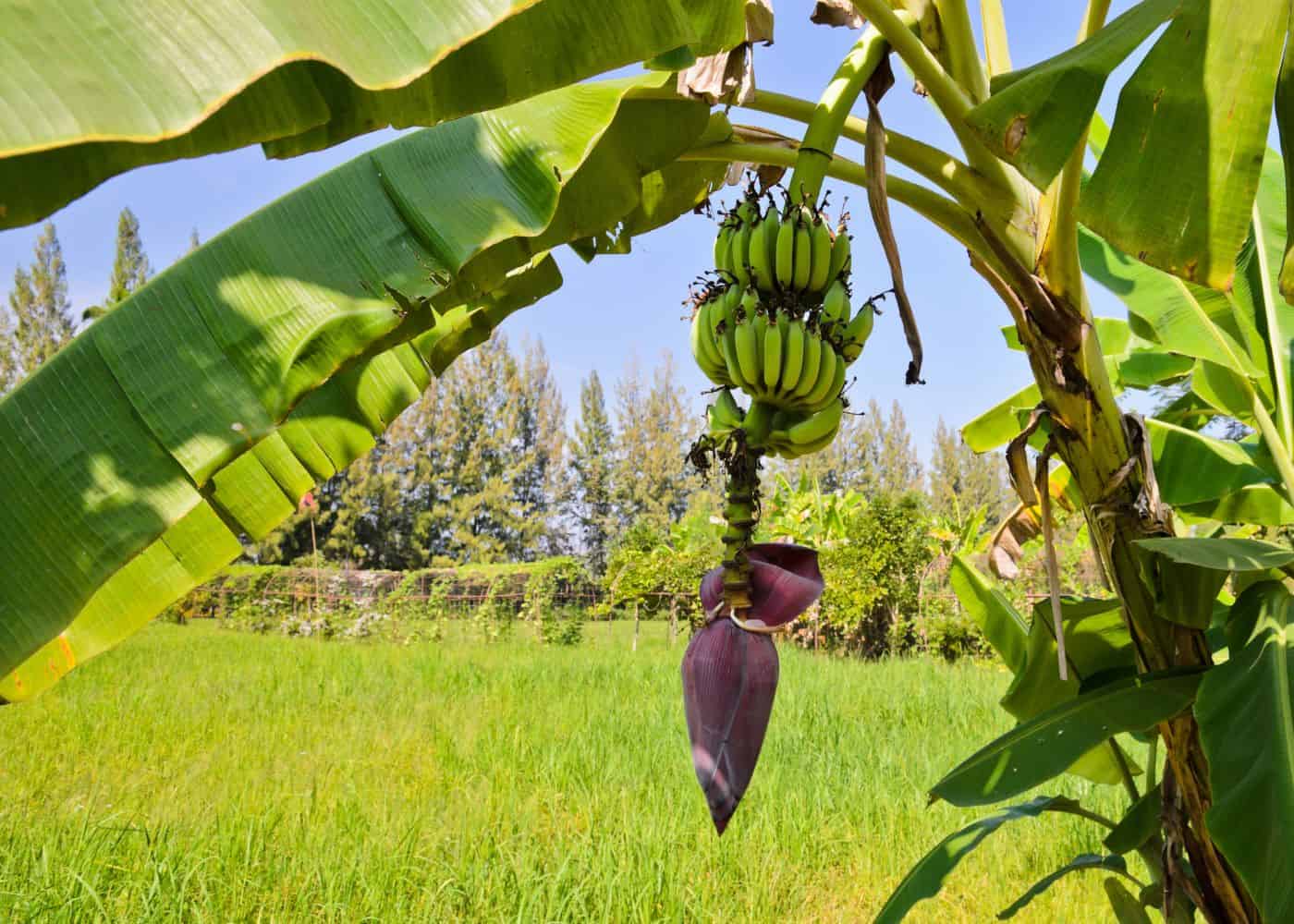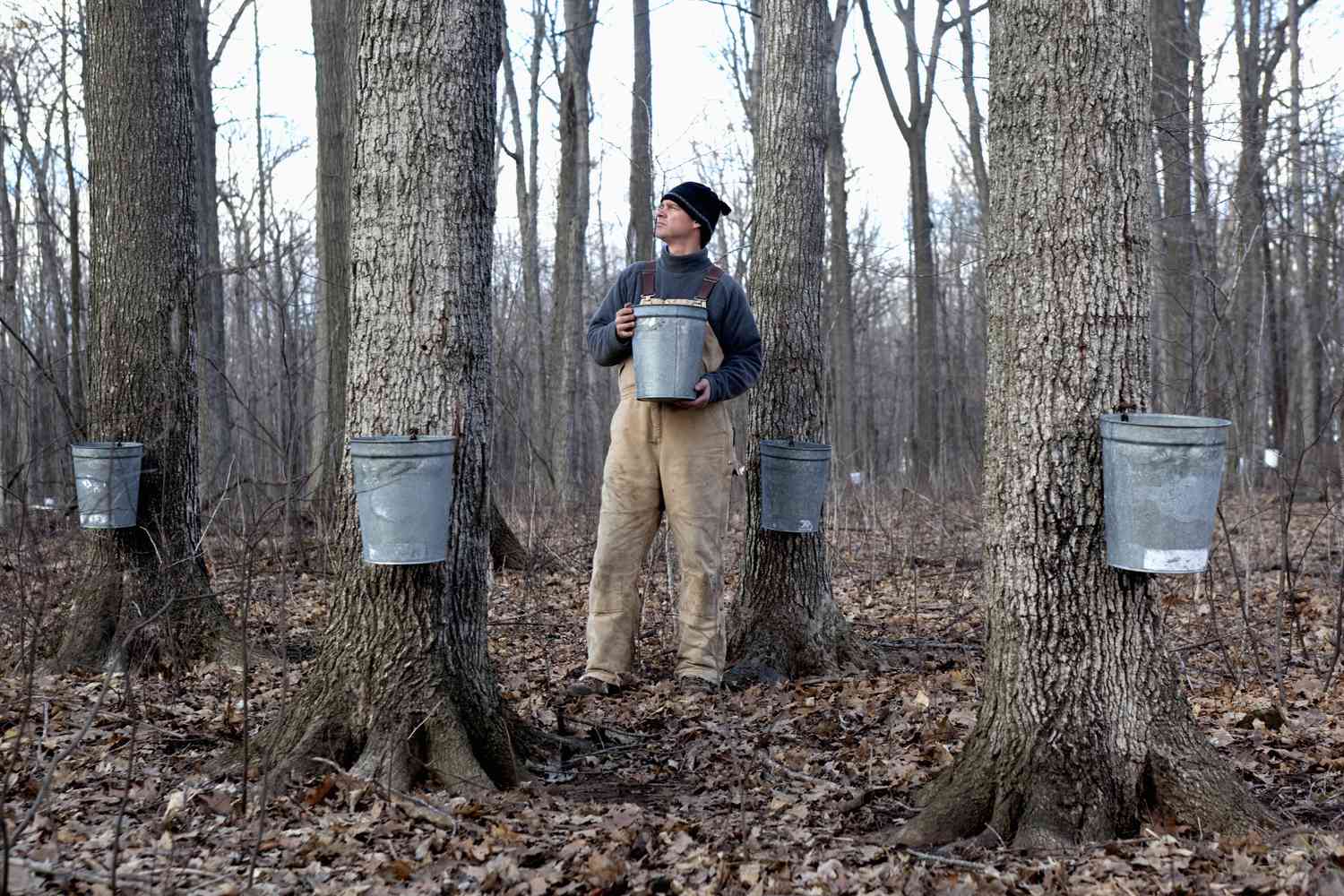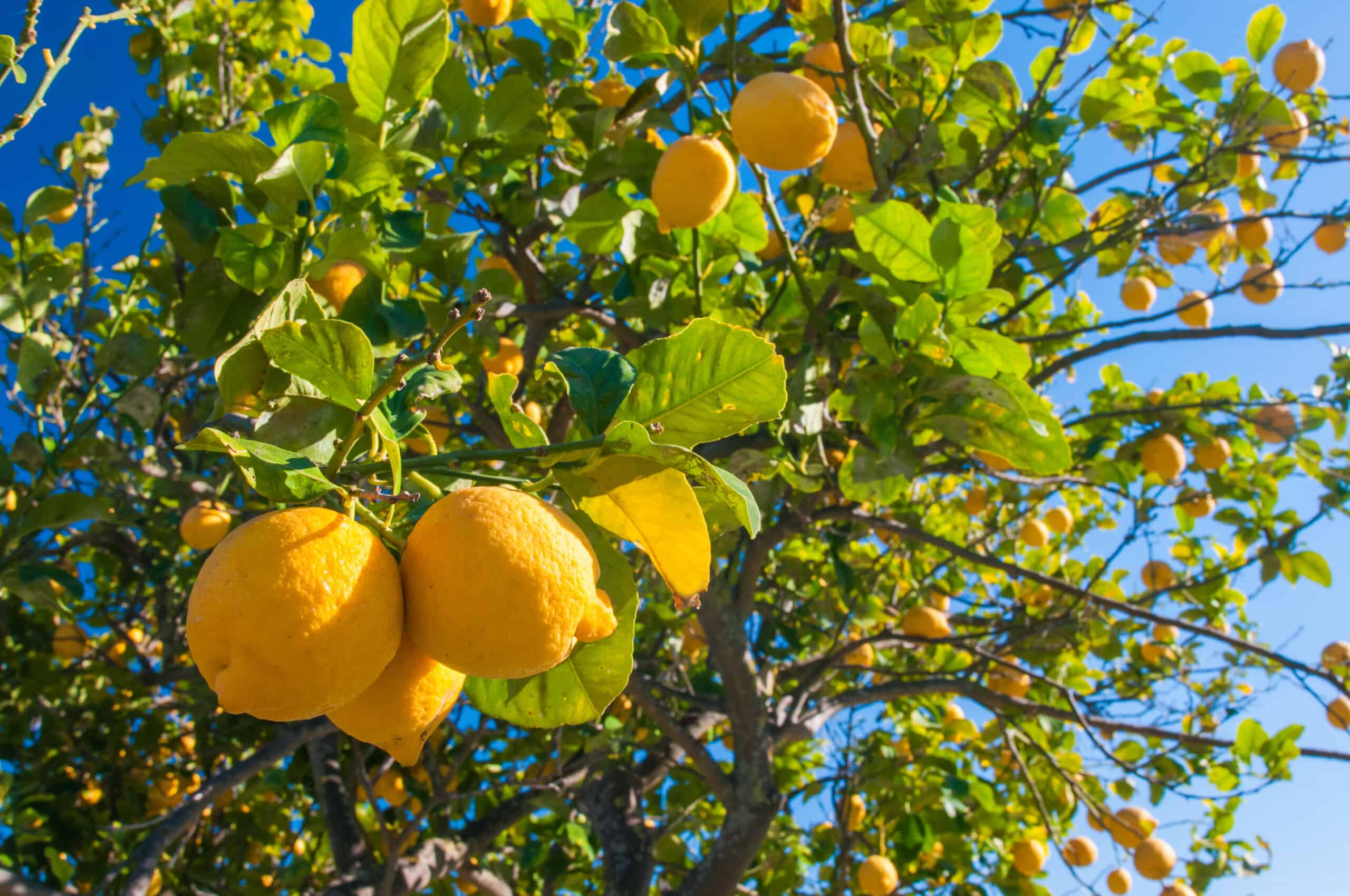Home>Gardening News and Trends>Latest News>Which Trees Produce The Most Oxygen


Latest News
Which Trees Produce The Most Oxygen
Modified: January 22, 2024
Discover which trees produce the most oxygen in our latest news. Learn how these trees can benefit our environment and improve air quality.
(Many of the links in this article redirect to a specific reviewed product. Your purchase of these products through affiliate links helps to generate commission for Chicagolandgardening.com, at no extra cost. Learn more)
Table of Contents
Introduction
Trees are not only essential for the health and well-being of our planet, but they also play a crucial role in producing the oxygen we breathe. Every breath we take is made possible by the oxygen released into the atmosphere through a process called photosynthesis. While all trees contribute to this vital process, some species are especially efficient at producing oxygen. Understanding which trees produce the most oxygen can provide valuable insights into the conservation and restoration of our forests.
Forests cover nearly one-third of the Earth’s land surface and are often referred to as the “lungs of the Earth” due to their ability to absorb carbon dioxide and release oxygen. Through photosynthesis, trees absorb carbon dioxide, a greenhouse gas responsible for climate change, and convert it into oxygen. This natural process not only provides us with the air we breathe but also helps regulate the Earth’s climate.
In addition to their role in oxygen production, trees offer numerous other benefits to ecosystems and humans alike. Forests provide habitats for countless species, purify water sources, prevent soil erosion, and contribute to climate regulation. Moreover, they offer recreational spaces and have been shown to have positive effects on mental health and well-being.
However, it is important to note that oxygen production is just one aspect of a tree’s ecological contribution. Each tree species has its unique attributes, growth patterns, and interactions with its surroundings. Factors such as climate, soil conditions, sunlight exposure, and age can influence a tree’s oxygen production capabilities.
In this article, we will explore the importance of trees for oxygen production, delve into the factors that affect oxygen production in trees, and highlight some of the top tree species known for their exceptional oxygen-producing ability.
Importance of Trees for Oxygen Production
Trees are crucial for oxygen production as they act as natural oxygen factories through the process of photosynthesis. During photosynthesis, trees take in carbon dioxide from the atmosphere and, with the help of sunlight and chlorophyll, convert it into oxygen and glucose. This oxygen is then released back into the air, contributing to the oxygen levels we need to survive.
Without trees, the oxygen levels in the atmosphere would significantly decrease, leading to severe consequences for all living organisms. Oxygen is essential for the respiration process of humans and animals. It allows our cells to break down glucose and produce energy for vital bodily functions. Additionally, high oxygen levels in the atmosphere help maintain a healthy balance of other gases and support the overall stability of our ecosystem.
Moreover, trees play a crucial role in mitigating climate change. By removing carbon dioxide from the atmosphere, they help reduce the greenhouse effect, preventing the Earth’s temperature from rising to unsustainable levels. This, in turn, helps protect against the negative impacts of climate change, such as extreme weather events, rising sea levels, and habitat destruction.
Furthermore, trees enhance air quality by filtering harmful pollutants and releasing clean oxygen. They act as natural air purifiers, trapping dust particles, absorbing pollutants such as nitrogen dioxide and sulfur dioxide, and releasing fresh oxygen back into the atmosphere. This filtration process helps reduce respiratory problems and improves overall air quality, particularly in urban areas where pollution tends to be higher.
Not only do trees benefit humans, but they also provide habitats and food for countless species of plants and animals. Forests are home to a diverse range of wildlife, from insects and birds to mammals and reptiles. The oxygen produced by trees sustains these habitats and supports the delicate balance of ecosystems.
Lastly, trees offer numerous recreational and aesthetic benefits. They create a calming and serene environment that improves mental well-being and reduces stress. Parks, gardens, and green spaces filled with trees provide havens for relaxation and outdoor activities, which play a vital role in maintaining a healthy and active lifestyle.
Given their significant contributions to oxygen production, climate regulation, air quality, habitat preservation, and human well-being, it is clear that trees are of paramount importance to our planet. Understanding the factors influencing oxygen production in trees can further our efforts in conservation and reforestation projects, ensuring a sustainable future for generations to come.
Factors Affecting Oxygen Production in Trees
While all trees contribute to oxygen production through photosynthesis, several factors can influence the amount of oxygen a tree produces. Understanding these factors is essential when considering the overall oxygen-generating potential of different tree species.
Tree Species: Some tree species are inherently more efficient at oxygen production than others. Different species have varying requirements for sunlight, water, and nutrients, which can affect their growth and photosynthesis rates. For example, deciduous trees tend to have higher photosynthetic rates during the summer season when they have ample access to sunlight and water.
Climate: Climate plays a crucial role in determining the oxygen production of trees. Trees in warm and temperate climates often have longer growing seasons, allowing them to photosynthesize for a greater duration. High temperatures can also enhance photosynthesis rates in certain tree species, resulting in increased oxygen production.
Soil Conditions: The quality and nutrient content of the soil can significantly impact a tree’s growth and photosynthetic efficiency. Trees growing in fertile and well-drained soil tend to have healthier root systems, allowing them to absorb more water and nutrients. This, in turn, supports their photosynthetic processes and contributes to increased oxygen production.
Light Availability: Light is a critical factor in photosynthesis, as trees require sunlight to convert carbon dioxide into oxygen and glucose. Trees growing in areas with ample sunlight exposure, such as open fields or areas with minimal shade, can effectively capture light energy and carry out photosynthesis more efficiently.
Age and Size: Older and larger trees have a greater biomass and canopy area, allowing them to capture more sunlight and perform higher rates of photosynthesis. As trees mature, their overall oxygen production tends to increase, making them significant contributors to oxygen levels in their surroundings.
Tree Health: The overall health of a tree, including factors such as disease, pests, and physical damage, can impact its ability to photosynthesize and produce oxygen. Healthy trees with robust foliage and intact bark are better equipped to carry out photosynthesis effectively, resulting in higher oxygen production.
Seasonal Variations: Oxygen production in trees can vary throughout the year due to seasonal changes. In temperate regions, for example, deciduous trees go through cycles of leaf growth and leaf shedding. During the spring and summer months, when trees are in full leaf, their oxygen production is typically at its peak.
Overall Environmental Conditions: External factors such as air pollution, drought, or extreme weather events can adversely affect a tree’s ability to photosynthesize. Air pollution, in particular, can limit the amount of carbon dioxide available for trees to convert into oxygen, potentially reducing their overall oxygen production.
By considering these factors, researchers and conservationists can gain insights into which tree species are best suited for oxygen production in specific regions and environments. This knowledge can guide reforestation efforts and inform sustainable forestry practices to maximize the oxygen-generating potential of our forests.
Top Trees That Produce the Most Oxygen
While all trees play a vital role in oxygen production, certain species are known to be particularly efficient in generating oxygen. Here are some of the top trees that contribute significantly to oxygen levels:
- Black Locust: Black Locust (Robinia pseudoacacia) is a fast-growing deciduous tree native to North America. It has high photosynthetic rates, making it an excellent oxygen producer. Black Locust is also known for its nitrogen-fixing properties, which enhance soil fertility and support the growth of other plant species.
- Poplar: Poplar trees (Populus spp.) are renowned for their rapid growth and dense foliage. They have high photosynthesis rates and are known to generate a substantial amount of oxygen. These trees are often planted in reforestation projects and as windbreaks due to their ability to quickly establish themselves.
- Alder: Alder trees (Alnus spp.) are nitrogen-fixing species that thrive in wetter environments such as riverbanks and wetlands. Their high metabolic rates and ability to grow in nutrient-poor soils contribute to their oxygen production. Alder trees also help improve water quality through their water-purifying capabilities.
- Oak: Oak trees (Quercus spp.) are iconic and long-lived hardwood species found in various regions worldwide. With their expansive canopies and extensive root systems, oak trees produce significant amounts of oxygen. They are also valuable for their role in supporting diverse ecosystems and providing habitat for numerous species.
- Maple: Maple trees (Acer spp.) are known for their vibrant autumn foliage and their ability to produce substantial amounts of oxygen. With their wide range of species, including the iconic sugar maple, these trees are important contributors to oxygen levels in many regions.
- Eucalyptus: Eucalyptus trees (Eucalyptus spp.) are native to Australia but are now cultivated in various parts of the world. These evergreen trees have high photosynthetic rates and are known for their rapid growth. Eucalyptus trees are extensively planted in reforestation projects due to their ability to generate oxygen and adapt to different environmental conditions.
- Cedar: Cedar trees (Cedrus spp.) are large evergreen conifers that are widely distributed across different regions. They are known for their longevity and ability to withstand harsh environmental conditions. Cedar trees contribute significantly to oxygen production and are valued for their aesthetic appeal and wood quality.
- Pine: Pine trees (Pinus spp.) are among the most common coniferous trees worldwide. Their needle-like leaves and resinous bark allow them to retain moisture efficiently, enabling them to thrive in various climates. Pine trees have high photosynthesis rates and produce sizeable amounts of oxygen.
- Birch: Birch trees (Betula spp.) are deciduous hardwood trees known for their distinctive bark and slender branches. They have high photosynthetic rates, contributing to oxygen production. Birch trees are also appreciated for their ornamental value and are often planted in urban settings.
It is important to note that the oxygen production of trees can vary based on environmental factors and regional conditions. Additionally, the selection of tree species for planting should consider factors such as local climate, soil conditions, and overall ecosystem health.
By prioritizing the planting and preservation of these oxygen-producing tree species, we can maximize the ecological benefits and ensure a sustainable future for both humans and the environment.
Conclusion
Understanding the significant role trees play in oxygen production is essential for our planet’s health and well-being. Trees act as natural oxygen factories, converting carbon dioxide into oxygen through the process of photosynthesis. This oxygen is vital for the respiration of humans, animals, and countless other organisms.
Factors such as tree species, climate, soil conditions, light availability, age, and overall tree health can influence the amount of oxygen a tree produces. Certain tree species, including Black Locust, Poplar, Alder, Oak, Maple, Eucalyptus, Cedar, Pine, and Birch, are known for their exceptional oxygen-generating capabilities. These trees contribute substantially to oxygen levels and provide additional benefits such as purifying the air, supporting biodiversity, and mitigating climate change effects.
While oxygen production is just one facet of a tree’s ecological contribution, it underscores the importance of conserving and reforesting our landscapes. By planting and nurturing oxygen-producing tree species, we can combat climate change, improve air quality, preserve habitats, and enhance the overall well-being of our ecosystems.
It is imperative that we prioritize sustainable forestry practices and responsible land management to ensure the long-term health of our forests. Conservation efforts, reforestation projects, and urban green spaces all play a crucial role in maximizing oxygen production and creating a healthier, more resilient environment for future generations.
By recognizing the significance of trees for oxygen production and adopting measures to protect and promote their growth, we can make a positive impact on our planet’s health and ensure a sustainable future for all living beings.





